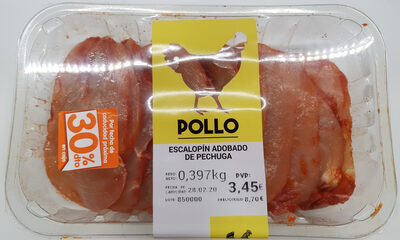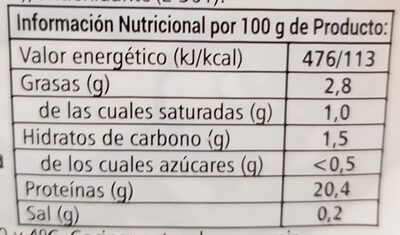Escalopín adobado de pechuga - dia
This product page is not complete. You can help to complete it by editing it and adding more data from the photos we have, or by taking more photos using the app for Android or iPhone/iPad. Thank you!
×
Barra-kodea: 2500321003455 (EAN / EAN-13)
Ontziratzea: en:Plastic
Markak: Dia
Kategoriak: en:Meats and their products, en:Meats, en:Chicken and its products, en:Poultries, Oilo, en:Chicken breasts
Etiketak, ziurtagiriak, sariak: en:No gluten, en:No eggs, en:No lactose
Origin of ingredients: Espainia
Manufacturing or processing places: Toledo, España
Traceability code: ES 10.025658/TO CE
Link to the product page on the official site of the producer: http://www.uvesa.es
Dendak: Dia
Saltzen diren herrialdeak: Espainia
Matching with your preferences
Ingurumena
Carbon footprint
Ontziratzea
Transportation
Report a problem
Datuen iturria
Product added on by alexrios
Last edit of product page on by packbot.
Produktuaren orria -gatik editatua musarana, openfoodfacts-contributors, roboto-app, thaialagata.









